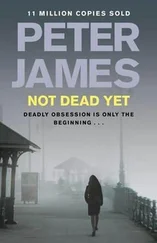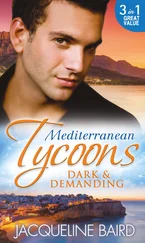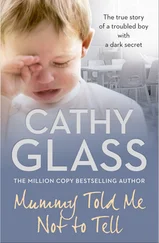The hall beyond the second door looked more like an old woman’s house than that of a young academic. The hardwood floor had darkened with age and multiple applications of varnish, its many eyes large and black. Four open doors with thickly painted paneling and carved frames led out of the square central space. A narrow set of stairs ascended to the second floor, its wall covered with black and white images hung in dark frames, old photographs of relatives, he assumed. Among the pictures were also framed certificates and awards, like a display of achievements for the ancestors. At the bottom of the stairs stood a circular mahogany table covered with a round lace doily and an antique porcelain lamp painted with flax flowers.
“This used to be my grandparents’ house,” Kaye said. “I’ve been meaning to redecorate, but there never seems to be enough time. The living room and kitchen are a bit more this century, I promise.”
He smiled. “Wait a few more years and this’ll be trendy again.”
Kaye laughed. “Want a drink?”
“Just some water, thanks,” he said, hoping it wouldn’t unnerve Kaye since his original invitation had included coffee.
“All right,” Kaye said, hesitated for a moment, then turned and vanished through the door at the opposite end of the hall. “The living room’s to the right, please make yourself at home!”
“Thank you,” he said. He relished exploring new spaces, whether private or public, inhabited or abandoned. In the past, when he glimpsed from outside apartments or houses that were either too bare and lonely-looking, or crowded with old-fashioned, outdated furniture like here, he yearned to stand inside those rooms, to see and experience what whoever lived there did. He had even considered breaking into certain buildings for a closer look at what he could tantalizingly glimpse from outside. But in the end the obvious risks were too high for the possible reward, and he steered his tastes over to abandoned industrial places instead. Those were like open secrets, accessible if one only looked hard enough, and were often more interesting and beautiful than buildings that were still inhabited and maintained.
He nevertheless didn’t want to miss the opportunity to look around in the old house before Kaye returned from the kitchen. He wanted to know more about the assistant professor without having to give away something about himself. Although he despised the self-aggrandizement of social media, he had searched for Kaye online. But except for a few websites at various research institutions which listed Kaye’s academic credentials and publications, the assistant professor seemed to have as small an internet presence as he himself did.
The living room faced the back garden, where a rotary clothes line turned slowly in the darkness. The grass stood thick and tall from neglect and mild autumn weather. A low boxwood hedge separated the garden from the property behind it, another patch of lawn with another old house in the middle, this one in sky-blue stucco with white windows and doors. A black three-seat leather sofa stood against the window, holding a pile of laundry, clean from the crinkled look of it: t-shirts, socks, rumpled jeans and chinos, some underwear. In front of the sofa stood a blond oak table, covered in books and magazines, with even more stacked on the shelf beneath the top.
Opposite the window was a large shelf filled with books, ranging from small paperbacks at the top to hardbound volumes in the middle and large atlases at the bottom. Scattered on the shelves were carved figurines that looked tribal, framed butterflies and beetles, postcards from a rainforest and a polar landscape, a miniature head-mounted camera, a pair of pliers, a ring with several keys, and a flashlight. There was no TV, no DVD player, no music system, not even a radio. In the corner by the door stood a massive wood stove on an unpolished granite plate. The brass firewood holder next to it was three-quarters full of logs and the set of wrought iron spade and brush next to it were gray with soot. The doorway led to the kitchen, which he only glimpsed as a narrow space lined with cupboards.
The second door in the hall led to a dining room facing the front garden and the street. By the large bay window stood a dining table with eight chairs, made from a shiny burgundy wood he guessed was mahogany, carved into graceful legs and rails. Behind the table was a cabinet of the same material and design, its glass panes opaque with age. On the wall opposite the bay window hung a large oil painting with a frame as broad as his hand, carved into garlands and ribbons, the gilding having darkened with time. The canvas displayed a wetland devoured by black, roiling clouds that most of all resembled the front of a sandstorm. The sliver of sky above it looked like it was on fire. The bog itself lay in darkness, with the silhouettes of only a few trees and bushes visible. At first the painting reminded him of the tempests on Mars that could engulf the whole planet in dust, but with a sudden and irrational unease, he recognized the marsh as that which surrounded his apartment.
When Kaye appeared from the kitchen, he was sitting on the sofa next to the pile of laundry. The assistant professor put two steaming mugs of coffee down on the table, handle-less, with a geometric pattern along the rim. It reminded him of clayware he had seen in countries along the old trade route to the eastern continent, now impassable because of unrest and civil war. He was surprised, Kaye seemed so dedicated to his work he’d expected thermos mugs with the university’s coat of arms.
“I made you some coffee anyway,” Kaye said. “It’s a chilly evening.”
“Thanks,” he said and smiled. The cup warmed his hands comfortably.
“Please ignore the mess.” Kaye grinned, gathered up the pile of laundry, put it on the floor, and sat down.
He lifted the cup and inhaled the aromatic fragrance of the liquid. Refraining from blowing on it, he took a small sip. “It’s good,” he said, “but this will keep me awake all night.”
“Is that a bad thing?” Kaye said and leaned very close.
At first the kiss was soft, but as he responded, it became more insistent. His pulse pounded in his ears and the rest of the world vanished in a rush of touch and scent and pleasure.
After that there were more evenings in the owl room, more coffee, and more nights in the old house. He didn’t ask Kaye home and the assistant professor never invited himself there, perhaps for fear of being rejected. From the furtive glances Michael sent him when he thought he wasn’t looking, he knew Michael suspected there was someone else. But from the unfamiliar scents on Michael and the lack of text messages, he also thought there was someone else with him. At least he hoped so, for his own bad conscience, but he never asked Michael.
He wondered what would happen when he was done photographing the owls. Would he see Kaye again, or would they quietly part ways? Was there even now an unspoken but definite agreement that when the job was done, that was it, or was there an expectation about something more, something longer lasting? Kaye didn’t really seem interested in that, or he probably would have been more insistent. Or maybe the assistant professor was just busy and preoccupied with his work, as his house indicated. His own expectations were even harder to catch, like water in his hands, so he pushed the questions away till later.
At Kaye’s there were images of friends, colleagues, grinning from university campuses and surfing beaches and mountain tops, and what looked like siblings, parents, grandparents, and other relatives, as well as a single photo of a blond man and a small child with the assistant professor. The man and Kaye looked like more than friends, seemed a family, but the print was unframed and dusty and lay on top of a pile of books on ecology and population dynamics on the floor in Kaye’s bedroom. He didn’t ask about the photo or any of the other mementos the house was filled with.
Читать дальше












